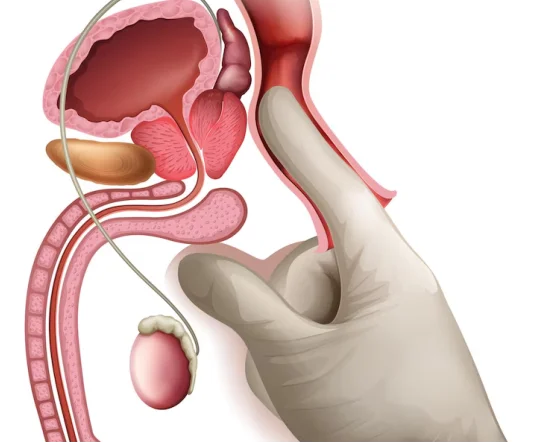Hydrocele surgery is a common urological procedure performed to treat a hydrocele, a fluid-filled sac that develops around the testicle, causing swelling in the scrotum. While many hydroceles are harmless and may resolve on their own, others may require surgical intervention to relieve discomfort, prevent complications, or address underlying medical concerns.
However, not all hydroceles go away naturally. In some individuals particularly adults a hydrocele can persist, increase in size, or cause discomfort, heaviness, or a dragging sensation in the groin area. In such situations, medical intervention becomes necessary. Hydrocele surgery, also known as hydrocelectomy, is recommended when the condition begins to interfere with daily life, poses a risk of infection, or is associated with other underlying medical issues such as trauma, infection, or testicular tumors.
What Is a Hydrocele?
A hydrocele is the buildup of fluid in the thin sheath surrounding the testicles, often resulting in swelling of the scrotum. It is most common in newborns but can also develop in older boys and men, especially after an injury or inflammation.
Hydroceles can be congenital (present at birth) or acquired (developing later in life). Though typically painless and non-cancerous, large or persistent hydroceles may require surgery.
Understanding Hydrocele Surgery
Hydrocele surgery, also known as hydrocelectomy, is a minor surgical procedure in which the excess fluid is drained and the sac is removed or repaired. This prevents the hydrocele from recurring.
The surgery is generally safe, with a short recovery time, and is often performed under general or local anesthesia, depending on the patient’s condition.
When Is Hydrocele Surgery Required?
Not all hydroceles need surgical treatment. In infants, a hydrocele often disappears within the first year of life without any intervention. However, in adults or older children, surgery may be advised if:
- The hydrocele lasts longer than 6–12 months
- It causes pain or discomfort
- There is a significant size increase
- It interferes with daily activities
- There is a risk of an underlying condition like infection, trauma, or testicular tumor
Causes For hydrocele surgery
- Persistent Congenital Hydrocele :-
In infants, a hydrocele occurs due to a patent processes vaginalis, an opening between the abdomen and scrotum that fails to close after birth. Normally, this should seal shut shortly after delivery. If it doesn’t, fluid from the abdomen may flow into the scrotal sac, leading to a communicating hydrocele.
While many congenital hydroceles resolve spontaneously, surgery becomes necessary if the fluid doesn’t get reabsorbed by the age of 1 or if the swelling worsens over time.
- Injury or Trauma to the Scrotum :-
One of the most common causes of hydrocele in adults is scrotal trauma. Any injury, whether from sports, accidents, or physical impact, can trigger inflammation or bleeding around the testicle. In response, the body produces excess fluid, leading to the formation of a hydrocele.
If the swelling is persistent, painful, or causes discomfort, hydrocele surgery may be recommended to relieve symptoms and rule out other complications such as hematoceles or hernias.
- Infections and Inflammation :-
Epididymitis (inflammation of the epididymis) and orchitis (inflammation of the testicle) are known causes of acquired hydrocele. These conditions are often the result of sexually transmitted infections (STIs) or urinary tract infections.
In these cases, treating the underlying infection is the first step. However, if the hydrocele does not subside even after infection resolution, surgical drainage may be the only long-term solution.
- Inguinal Hernia Repair :-
Sometimes, hydrocele develops as a post-surgical complication of inguinal hernia repair. During the surgery, fluid can accumulate in the scrotal sac due to lymphatic disruption or fluid leakage.
If this fluid does not resolve over time and becomes uncomfortable or large, hydrocele surgery may be necessary to drain it and prevent recurrence.
- Testicular Tumors :-
Though rare, a hydrocele can sometimes form as a secondary effect of a testicular tumor. The tumor may cause obstruction in lymphatic drainage or irritate surrounding tissues, leading to fluid buildup.
If imaging suggests an underlying mass or malignancy, surgical exploration and removal of the hydrocele become vital, not just to relieve swelling but also for diagnostic and therapeutic purposes.
- Filariasis or Parasitic Infections (Common in Tropical Regions) :-
In parts of India and other tropical countries, filariasis a parasitic infection caused by thread-like roundworms—can block lymphatic channels, causing fluid accumulation and scrotal swelling (hydrocele).
In chronic cases where medications fail to reduce swelling, surgery becomes the primary treatment option to restore normal appearance and function.
- Idiopathic Causes (Unknown Reasons) :-
In many adult cases, hydrocele may appear without any clear cause. Known as idiopathic hydrocele, it often develops slowly and is discovered incidentally.
While idiopathic hydroceles are benign, they can grow large and become a source of embarrassment or discomfort. Surgical intervention is often considered if the hydrocele significantly interferes with the patient’s quality of life.
- Recurrent Hydroceles :-
Sometimes, a hydrocele that was previously drained using needle aspiration may return. Aspiration is a temporary solution and may not prevent fluid from reaccumulating.
If hydrocele recurs frequently, hydrocelectomy offers a permanent cure by removing or sealing the sac that produces the fluid.
Risks of Delaying Hydrocele Surgery
Ignoring a hydrocele that requires treatment can lead to:
- Increased swelling and scrotal heaviness
- Infection or rupture of the hydrocele sac
- Fertility issues, especially if both testicles are affected
- Misdiagnosis of serious conditions such as testicular torsion or cancer
Early diagnosis and timely surgical treatment ensure better outcomes and quicker recovery.
What to Expect from Hydrocele Surgery?
Hydrocelectomy is usually a day-care procedure, meaning you can return home the same day. Here’s a quick overview of what to expect:
- Duration :- 30–60 minutes
- Anesthesia :- Local, regional, or general
- Incision :- A small cut is made in the scrotum or lower abdomen to drain fluid
- Recovery :- Most patients resume daily activities within a week
- Complications :- Rare, but may include swelling, bruising, or infection
Conclusion
While a hydrocele is usually harmless, it shouldn’t be ignored especially if it’s persistent, painful, or causes visible swelling. Hydrocele surgery is a safe and effective solution for long-term relief, particularly when conservative methods don’t work.
However, not all hydroceles go away naturally. In some individuals particularly adults a hydrocele can persist, increase in size, or cause discomfort, heaviness, or a dragging sensation in the groin area. In such situations, medical intervention becomes necessary. Hydrocele surgery, also known as hydrocelectomy, is recommended when the condition begins to interfere with daily life, poses a risk of infection, or is associated with other underlying medical issues such as trauma, infection, or testicular tumors.























